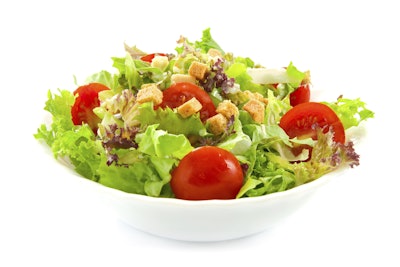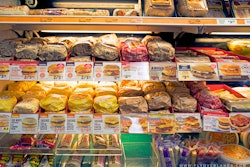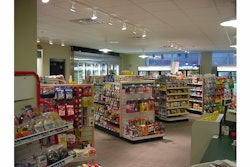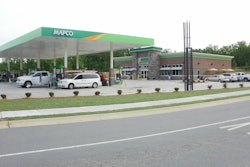
The Scoop
During the last several years, convenience store chains across the country have launched fresh channel initiatives, which included adding salads, freshly made sandwiches and other fresh grab-and-go products to its offerings. Penske Logistics was tapped by its customers to provide logistics support. The goal was to provide customers with an expanded selection of fresh foods daily, while minimizing truck traffic to/from the stores and maintaining the integrity of temperature-sensitive products.
The Tools
As Andy Moses, senior vice president-global products, Penske Logistics, explains, not all new customer accounts are created equally. “With one chain that has a 250-store footprint in two states, the previous 3PL provider was not particularly modern in its service offerings,” he recalls. “Our team spent extra time at the outset upgrading the customer’s capabilities.”
The addition of fresh channel required Penske to reconfigure its transportation fleet from smaller box trucks to larger tractor/trailers with dual-temperature zones and lift gates.
Moses says prior to fresh channel, box trucks were used to service the convenience stores, and drivers were only required to hold a Class B commercial driver’s license (CDL). The larger format trucks required a Class A CDL, so Penske embarked on a formal training program to get its drivers qualified for the larger trucks.
“We took the position that because customer service is so important, we would invest in our existing drivers to qualify them for the new equipment,” says Moses.
Three different models of large format trucks are used for fresh channel. The truck trailers are loaded with grab-and-go items in the front compartment, which is maintained at 38 degrees F. Baked goods are loaded in the second compartment.
“Previously, items were shipped direct-to-store by the vendor. With fresh channel, the vendor deliver to our cross dock, and we sort items accordingly. This reduced the number of trucks delivering to a single store from three to one,” says Moses.
Penske uses a number of software and technology tools to optimize route planning and maintain proper temperature of the fresh products.
“We build our routes so that drivers are circling the perimeter of the entire delivery area,” says Moses. The model facilitates quick action if another driver encounters traffic or delays.”
Temperature monitoring technology keeps a record of the products’ temperature from initial loading inside the trailer to delivery at the convenience store. The track and trace feature is critical in the case of a food recall.
Temperature recorders are also placed in certain totes to provide a secondary level of monitoring.
Compliance with the U.S. Food and Drug Administration’s (FDA) Food Safety Modernization Act (FSMA) is a mandate that Penske reacted to proactively.
“We anticipated and acted early,” Moses remarks. “We put temp monitoring software on the vehicles, and this links into the refrigeration unit and provides information back to dispatch. In addition to the driver checking temperatures in both zones of the trailer, the temp monitoring software offers even more visibility. Dispatchers get a notification if temperatures are going out of spec and they can take the appropriate action.”
In that situation, the driver has the option to deliver all temperature-controlled products at the next stop pending a replacement trailer. Likewise, if a store is experiencing a power outage, the driver keeps the refrigerated product for that store on the trailer and returns when the power is restored or delivers to the next closest store.
The Challenges & Opportunities
The biggest challenge with the fresh channel initiative is the synchronicity element that requires product vendors to consistently hit the mark with on-time delivery every day, explains Moses.
“For instance, there is a single bakery that makes one product line that goes on all the trucks, then the commissary that’s making pre-made food items like salads, as well as the roll maker, who requires the longest lead time among the vendors.”
“If any one of these vendors has a misstep, we need to communicate with the stores immediately because it could impact how they schedule their labor,” he says.
Two years ago, one of the convenience store chains expanded into a new region with several dozen stores. Penske essentially recreated the existing infrastructure, but on a smaller scale to fit the requirements of that market, Moses says.
At first, “The fresh channel initiative was new to our convenience store chain customers, and it was new for us too,” says Moses. “We took the concept and developed it with them.” Most importantly, it’s a concept that resonates with consumers who are looking for healthier and fresh food choices at a variety of retail outlets, even convenience stores. ◆
Penske’s Recipe For Success
• Providing the right equipment to maintain highly perishable foods that require refrigerated and ambient temperature zones
• Creating a new routing system that helps lower costs by reducing the amount of equipment required
• Coordinating activities among three key suppliers, with all communications being funneled through a centralized (Penske) dispatch
• Establishing a cross-dock fresh channel consolidation facility
• Increasing delivery frequency for greater flexibility and increased store customer satisfaction


















